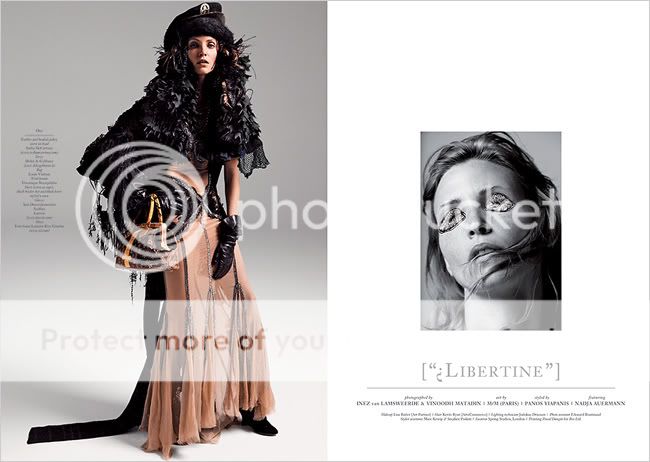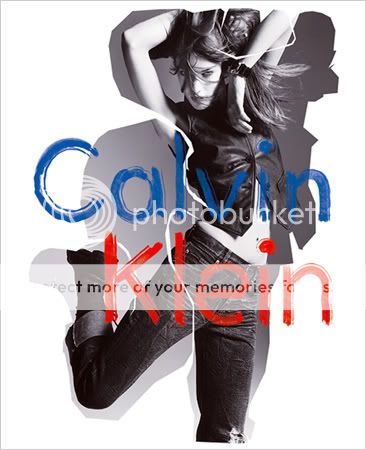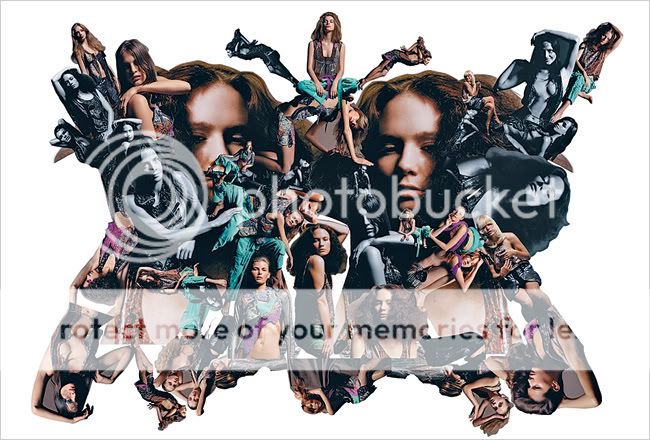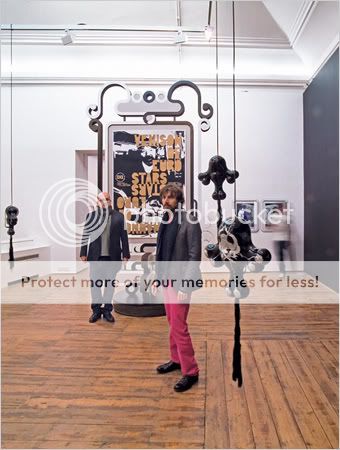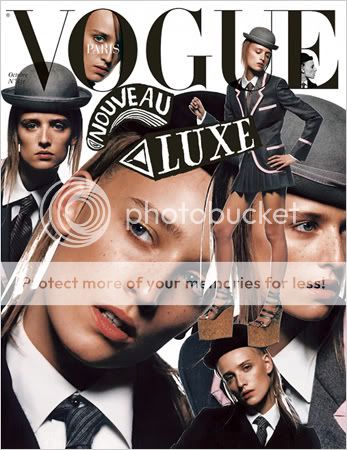Originally posted by Design Museum
M/M - Somewhere Totally Else: The European Design Show
Design Museum Exhibition
27 September 2003 to 4 January 2004
Through their work as graphic designers and creative directors in the fields of art, fashion and music, Michael Amzalag and Mathias Augustyniak have established M/M as a powerful force in contemporary French culture.
After meeting at art school in Paris, Michael Amzalag and Mathias Augustyniak founded M/M in 1992. They have sinced worked together as graphic designers and art directors on fashion and art projects mostly for longstanding clients and collaborators – such as the fashion designers Yohji Yamamoto and Martine Sitbon, and the photographers Craig McDean, Inez van Lamsweerde and Vinoodh Matadin.
After starting out with music projects, M/M became involved with Yamamoto and Sitbon in 1995 and have since worked for other fashion houses including Balenciaga, Louis Vuitton and Calvin Klein. Their work in the art world ranges from commissions for museums such as Centre Georges Pompidou and Palais de Tokyo in Paris, to collaborations with artists like Philippe Parreno and Pierre Hughe. Amzalag and Augustyniak also work as creative consultants to Paris Vogue.
See more of M/M's work at: http://www.mmparis.com
And on our Design Now - Graphics site:
http://www.designnowgraphics.co.uk
Q. What were your early design influences? What drew you to graphic design?
A. We chose graphic design not just for the sake of being graphic designers. It was some kind of social commitment, a way to earn a living and also to disseminate our ideas. The activities related to graphic design are very suitable for us. We enjoy the thinking process, but we prefer that it be related to form and that ideas have tangible results. Also, we don’t create things out of the blue, we want to form a relationship with someone. But, as such, graphic design doesn’t excite us more than any other media, than film or books for example.
Based in France, we were able to completely redefine the way we see graphic design. There are so few French designers that the field is not precisely defined in the way it is in say Germany, the UK or the US. There, you settle down to do corporate design, or record sleeve design, whereas in France there is still a great deal of room for experiment and crossover. Our early influences include everything, but nothing in particular. The way we see life, one thing isn’t greater than another. Everything is interwoven.
Q. Do you feel that your education (design or otherwise) influenced the way you work now?
A. We both studied at the École Nationale Supérieure des Arts Décoratifs in Paris. Michael left after two years, before receiving his diploma, to art direct the music magazine Inrockuptibles. I (Mathias) completed the degree and went on to study for two years at the Royal College of Art. We both went through very different things, and we find our two backgrounds very complementary. Education was a starting point. I left the Royal College feeling that I knew it all, but once I began working I had to reassess everything.
Q. Where did you meet and how did you start working together?
A. We met at the École Nationale Supérieure des Arts Décoratifs in 1988 and started working together in 1991. Immediately we both decided that we would never work for other people. Graphic design allows you to make a living out of your work and also to have a free voice.
Q. What were M/M’s early design commissions?
A. Because Michael was working for a music magazine, it was natural that we began to work for the music business, designing sleeves for bands and singers that you will never hear of. At that time in France, a lot of money was being spent marketing music which was French to the max. It was alright, not good, not bad, just part of our culture. Until four or five years ago when bands like Air and Daft Punk emerged, the French music scene was completely dead. Since then, the so-called "French Touch" has helped young French graphic designers to emerge. But back then – in the early 1990s – more established French design companies, such as Grapus, were doing all the work in the cultural field, work generated by the left-wing government of that era. We just took what was left.
Q. Over the last decade you have become more and more involved in fashion design. How did this come about and has it affected your work?
A. We first became involved in fashion by accident, through a friend of a friend who knew someone who worked at Yohji. Our first fashion job was to design the European launch of Yohji Yamamoto’s Y’s range in 1993. The work for Martine Sitbon came two or three months after. First we designed an invitation and that led to the whole Martine Sitbon adventure and naturally it attracted the interest of other clients. Likewise, several months later we met people who worked for the French art magazine Documents and that led to our working in art.
In fashion everything goes much faster, every six months you have to reinvent yourself. We have to keep a bit above and stay calm. It forces us to do bolder things, knowing that they will be copied and watered down. When we are working for fashion companies, we still try and mix in other projects in different fields. This is very important to our fashion work, which we see as looking at culture through fashion eyes. We always try and link one project to another. We want our work to be considered on a larger scale.
Q. How did your collaboration with Inez Van Lamsweerde and Vinoodh Matadin come about?
A. I remember meeting them at an APC party during Paris fashion week some years ago, probably in 1995. We thought their photographs were very daring
and very strong and we felt there was something we would like to work with.
It happened that they were aware of our work at that time. Collaborating together happened very naturally ... It is the same with all the photographers we work with, not just Inez and Vinoodh, but others such as Craig McDean. They become part of our process and we can be part of theirs; we produce images together.
Q. More recently you have worked with Björk, designing her CD package, her book and directing her video? How do you see that partnership developing?
A. We are currently working more with Björk. We tend to have a lot in common with the people we work with. We see graphic design as a conversation and we are always waiting for an answer. I think that it is important that the relationship develops until we realise that we've nothing to say to each other, and then to split amicably, without argument. At the moment it is a pleasure to work with Björk.
Q. You are very involved with the fine art scene in Paris, working with artists such as Philippe Parreno and Pierre Hughe and on projects such as the new art space Palais du Tokyo. How do you view your work in relation to fine art?
A. We see our work as more than providing a service. We are using our place as graphic designers strategically, in order to diffuse ideas. We are not against fine art, but we believe in some kind of relationship between the work and the people who commission the work. Very often in the art world relationships between the artist, the gallery and the collector are sterile, not productive or inspirational. In both fields we are dealing with ideas and often we find similar obsessions, that we are tracking the same line of thought. When we collaborate with artists, it is because the artists have asked us for our expertise. Whether what we produce is art or not, I don’t know. That is up to history to decide.
Q. How would you describe your current activities? Are you completely happy with the term graphic design?
A. It is not very poetic, but we don’t have anything against the term graphic design. It is more its definition that we question. Graphic design could embody a lot of activities and the definition is not fixed, but continually evolving. Because it is still a new profession, the best graphic designers are the ones who reinvent their field and surprise.
Q. Your work is characterised by the hand-made and the idiosyncratic. What do these qualities mean to you?
A. This is a way to see it. It might look spontaneous or "hand-made", but the way it is produced can be very complex, very highly crafted. Maybe it is about life, not pretending to do the impossible, allowing the mistakes to show. However, we’re however not sure this is an issue.
Q. Early last year you became art directors of French Vogue. Has taking on such a major commission changed the way that your studio operates?
A. We’re actually "Creative Consultants", if this can mean something. We’ve tried to establish a working relationship where we are external and we are not present full-time. We wanted to be out of the big machine and its everyday routine to have the chance to keep a fresh overview of the process of constructing the magazine, to be able to stay spontaneous. Even if it has been a bit difficult in the beginning, because what we were asking for was very unusual, now it proves to be a fruitful proposal. We take the design of Vogue very seriously, but we want to keep it in perspective. An ex-student of ours is working at Vogue full-time, training to become an art director. It is very important to nurture the next generation. We have spent a lot of time teaching in Lausanne in Switzerland and now the relationships we have built with students are beginning to blossom.
Q. Where will M/M be going in the next few years?
A. We are planning to release a book, an archive of ten years' work. Otherwise this question is too complicated to answer. We have will and desire, but they are not clearly formulated. It is good to have secret desires.
© Design Museum

<span style='font-size:8pt;line-height:100%'>Yohji Yamamoto catalogue, 1999
Art Direction: M/M (Paris)
Photography: Inez van Lamsweerde + Vinoodh Matadin

Yohji Yamamoto catalogue, 1998
Art Direction: M/M (Paris)
Photography: Inez van Lamsweerde + Vinoodh Matadin

Bjork: Hidden Place video still, 2001
Direction: Inez van Lamsweerde + Vinnodh Matadin with M/M (Paris)
Copyright: Bjork Overseas Ltd/One Little Indian Records

Balenciaga invitation card, 2002
Art Direction: M/M (Paris)
Photography: Inez van Lamsweerde + Vinoodh Matadin
</span>
A little old but I thought some might be interested in checking it out.




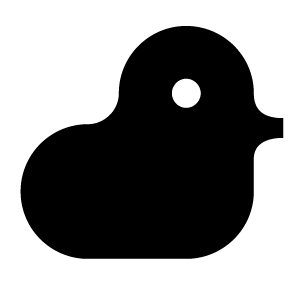





 Michael Amzalag (left) and Mathias Augustyniak.
Michael Amzalag (left) and Mathias Augustyniak.




